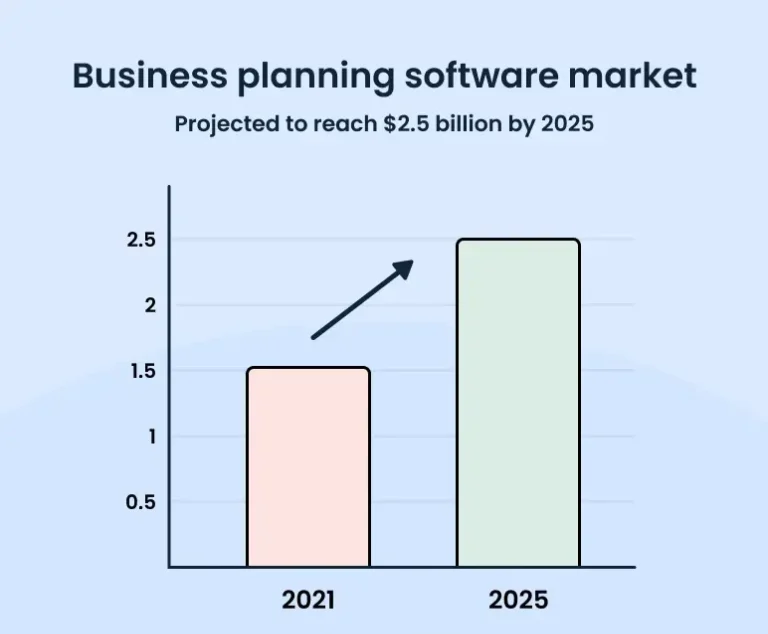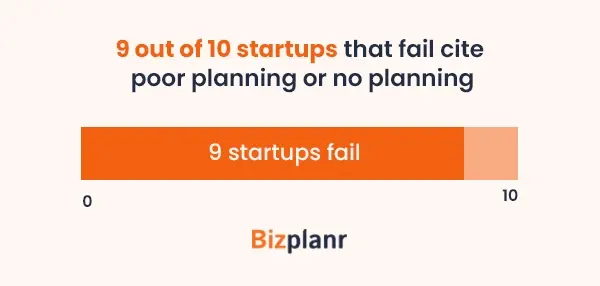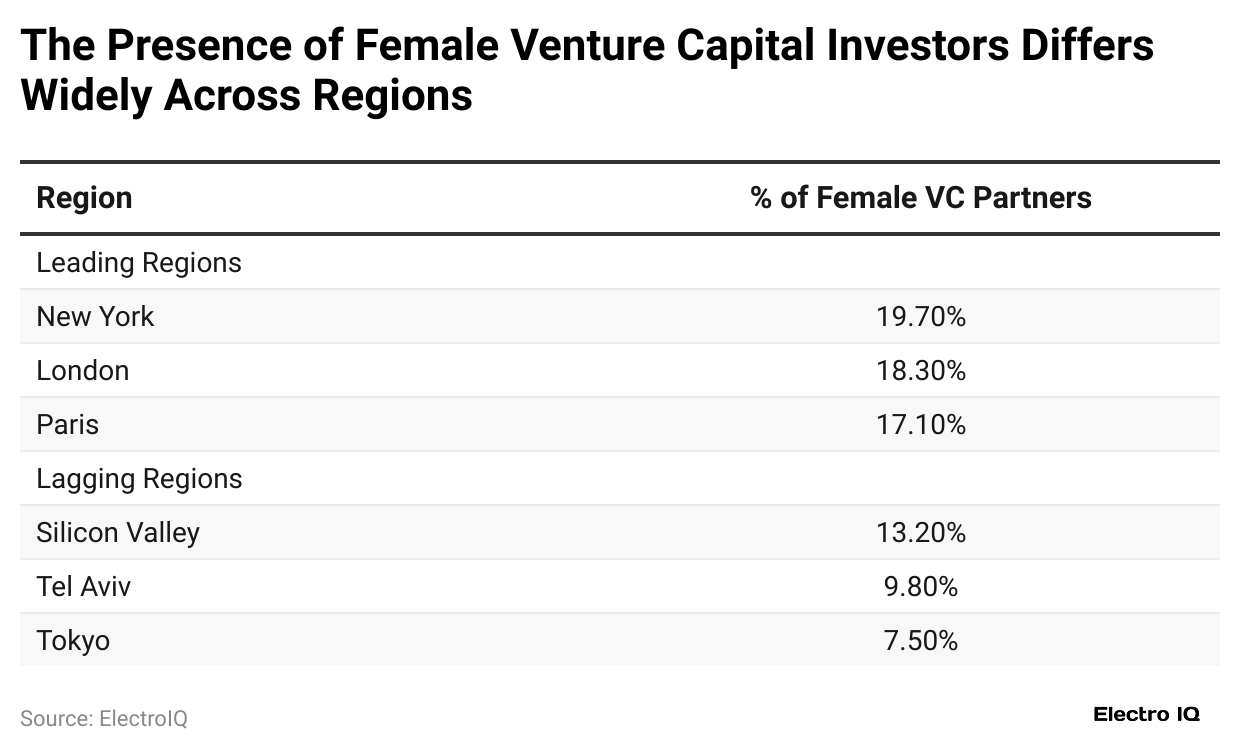Business Plan Statistics And Facts (2025)
Updated · Jul 14, 2025

Table of Contents
Introduction
Business Plan Statistics: Despite the year 2024, entrepreneurs and small business owners hold an essential spot in entrepreneurship, stressing the need for good business planning. An expertly designed business plan acts as a map towards success for an aspiring entrepreneur. It also helps in getting funding and in standing firm in the world of competition.
This article throws light on some of the key new business plans statistics related to business success, funding possibilities, and growth.
Editor’s Choice
- The industry for business planning software is presently estimated at US$2.5 billion, with expectations to attain US$7.8 billion by 2033, at a CAGR of 12%.
- According to statistics, 55% of the market comprises cloud-based solutions because of the flexibility and scalability they offer.
- Half of small companies operate without any formal business plan, and 9 out of 10 failed startups blindly cite poor planning as a reason.
- A female angel investor is said to be four times more likely to invest in women-led startups than their male counterparts.
- Another stat says only 13.7% of million-dollar startup founders are female; however, women-led startups bring in 35% more ROI.
- 33% of the plans include digital transformation strategies, with 40% focusing on sustainability initiatives.
- In 2024, large enterprise spending on business planning tools reached US$1 billion, which is forecast to double by 2032.
- 56% of investors say they back companies with a business plan that contains measurable goals.
- Market research is present in 63% of plans that succeed; 75% of investors consider financial projections their most important criteria.
- Financial planning is the most popular use case, capturing approximately 40% of the market.
- Startups with a formal plan are twice as likely to gain funding (78%) as startups without one (36%).
- By 2025, 67% of businesses will be automating planning processes, increasing sales productivity by 14.5%.
- Cities with high female VC partner representations: New York (19.7%), London (18.3%), Paris (17.1%).
- The executive summary will be found in 85% of business plans and will be about 10% of the document.
- AI-powered planning tools have increased by 180%, whereas mobile-based tools have increased by 250%.
- Custom, industry-focused planning tools have grown 90% since 2022, with growth mostly in healthcare, fintech, and tech.
Business Planning Software Market

- As per Upmetrics, business plan statistics state that the market for business planning software is observing heavy growth as more and more businesses are turning to digital tools to make better decisions.
- It is projected to reach US$2.5 billion in 2025 and then maintain a steady growth at a CAGR of 12% till 2033, ultimately touching around US$7.8 billion.
- The biggest push for this growth is cloud-based solutions, which hold 55% of the market, mainly due to their flexibility and scaling capabilities.
- Financial planning leads among the different functions of business planning software with a 40% market share.
- This underlines the trend of companies giving more importance to financial forecasting and budgeting as critical elements of their strategic planning activities.
- Geographically, North America has a large presence with a 42% share in business planning software. On the bright side, Europe and Asia-Pacific are also fast-growing regions well assisted by technological adoption and dynamic startup ecosystems.
- These solutions attract significant investments in the large-enterprise sector. In 2024, their share in the business plan software market is pegged at US$1.0 billion with a projection of US$2.0 billion by 2032.
- With US$1.5 billion in 2024, their share is expected to jump to US$3.0 billion by 2032. This 100% growth sees SMEs valuing digital planning for better and quicker decisions.
- Growth is one of the things being fueled by startups. By 2024, the startup-centric part of the market should be worth US$1.25 billion; by 2032, it is expected to double to US$2.5 billion.
- Around 67% of companies will have employed automation by 2025 to increase the visibility and coordination of operations.
Key Components of a Modern Business Plan
- Around 85% of organisations use executive summaries in their reports, says the International Association of Business Communicators, making them integral to clear, concise communication.
- Typically, the section makes up 10% of the entire document, usually covering from 1 to 2 pages. Another critical factor considered by 63% of successful business plans is market research.
- This data-driven information gives potential investors and stakeholders assurance that you understand the industry landscape, the customer needs, and your competitors.
- Without this information, the businesses risk entering a market blindly, without even understanding what works and what does not.
- Financial projections appeal very much to the investors: nearly 75% of investors rank them as among their top priorities.
- Plans setting measurable goals are 58% more likely to receive funding, as they depict a pathway to growth and accountability. Investors want to know not just where the company is going but also how its evolution will be tracked.
- Only 13% of employees in the U.S. believe that their bosses communicate well; the rest must be viewing the communication gap put forth by management as being more of a problem.
- For instance, 38.3% of sales leaders feel that goal alignment with marketing ranks as their highest priority, underscoring the need for internal cohesion.
- Startups with a formal plan secure funding 78% of the time, more than twice the rate of those without a plan, which is 36%.
- Overall, making a business plan improves funding outcomes by over 25%, translating to better offers and terms from investors and lenders.
- For example, sustainability initiatives feature in 40% of business plans, wherein social and environmental responsibility is viewed as a must by both customers and investors.
- Digital transformation strategies, such as AI integration and online business models, make up 30% of plans and are thus viewed as the solution for long-term scaling and competitiveness.
Business Failure Plan

- As per Bizplanr, business plan statistics show that Real-world planning data shows that several business failures can be pinned on inadequate plans. One common mishap is having unrealistic expectations, which is 18% of the earning plans, due to inappropriate expectations. This requires proper market research and sound financial projections so that goals are within reason and can be attained.
- Then there is rigidity as another issue; about 15% of entrepreneurs find themselves stuck because of sticking to an obsolete plan.
- The business team is equally important: 23% of failed startups blame their collapse on the misguided team, more frequently because of improper planning.
- A business dies due to poor marketing in the case of 14% of all such businesses set up. Namely, there was hardly any depth in defining the target audience, competitive positioning, and promotional techniques within their business plan. Having a rigorous marketing section in the business plan directs the marketing efforts more efficiently from day one.
- Surprisingly, though, 50% of small business owners do not have a formalised business plan. When an organisation has no business plan, it loses strategic orientation, potential for funding, and long-term perspective. This is placing the companies in a rather disadvantageous position.
- 9 out of 10 failed startups say that poor or non-existent planning is the primary cause of their failure.
Role of Gender in Business Planning
- Only 13.7% of founders in million-dollar startups will be women in 2025, down from 15% in 2022. Despite underrepresentation, women-led startups are paid well above expectations.
- Compared to those run by men, these companies will achieve a 35% higher return on investment once they have surmounted the funding barriers.
- These female-led teams still OT 14% less VC funding for the same business pitch, a sure sign of continuing systemic bias.
- Globally, 25% of startups are founded by women, and 37% have at least one woman on their board.
- More than 800 female investors are connected to founders globally via online platforms, increasing the average funding round by around US$4.9 million.
- Networks like these are helping close the gender-funding gap while raising the profile of female ventures. In the European funding ecosystem, however, the gap stands out even more.
- Only 2% of VC goes to women-led startups.
- In consequence, such measures as the Invest in Women Taskforce in the UK are geared toward actually tripling the percentage by 2026, emphasising gender-lens investing and direct stipends for women founders.
- The fact remains that there has grown an increasing awareness that custom-made, highly strategic business planning is critical to attract gender-lens investments and to truly impact startup success. In the U.S., the numbers paint a similar picture.
- As per Founder Forum Group, business plan statistics indicate that in 2024, women-founded startups garnered only 1.8% to 2.3% of all venture capital funding, despite an estimated revenue generation of US$2.1 trillion by them.
- In 2025, teams comprising only females garnered all of 2.3% of VC funding, which slightly increased to 3.2% during the seed stage but again dipped to 2.7% by Series A.
- In such a fund scene that has a long way to go in gender parity, these figures emphasise the importance of female founders coming up with a strong, researched, strategic business plan to draw early interest.
Presence of Female Venture Capital in Different Regions

- The representation of female VC partners varies enormously according to regions, shedding light on lagging progress and persisting inequalities in global investment ecosystems.
- New York has led the charts with roughly 19.7% female VC partner presence. Close behind is London with 18.3%, and a close third position is occupied by Paris, with 17.1%.
- These cities have better inclusion for women in decision-making roles in the venture capital space, which could produce more equitable funding decisions, especially for women-led startups. However, some other major tech hubs have lagged behind drastically.
- Despite being the greatest centre of innovation and investment in the world, Silicon Valley has barely 13.2% female VC partners. This deficit is starker in Tel Aviv with 9.8%, and even more so in Tokyo at 7.5%.
- These figures are an indication of limited gender diversity at and around the leading startup areas; the kind of businesses that get funded may sway along with the investment decisions towards inclusiveness or otherwise.
Business Exit Planning and Success
- Growth and expansion remain the phases many companies go through in the short term, or around six to ten years following their inception and prevailing in the marketplace.
- However, the exit-planning phase is left highly neglected. In the United States, nearly three-quarters of entrepreneurs want to leave their corporations in the next 10 years, with only half preparing a plan for succession.
- The increased acknowledgement of transitions (68% looked for means to facilitate business transitions in 2023) has not prepared most for their own businesses, as 78% still do not have a designated transition team to assist in transitions.
- Planned exits generally do not work out. Approximately 50% of business exits are forced due to unforeseen circumstances such as illness, economic downturn, or a personal emergency.
- Despite 70% of owners saying they want to transfer businesses to family or employees, only 20 to 30% manage to sell their businesses successfully on the open market.
- Most transitional sales end up missing the mark or getting low-ball offers due to poor preparation.
- The remorse is evident: Close to 75% of business owners who sold regretted it, mostly because of poor planning or buyers who did not fit with the company’s legacy or goals.
- Startups face an even steeper challenge–only about 10% of them exit successfully through acquisition and IPO, underlining how challenging it is to carve a workable long-term exit path from competitive arenas. Exit planning is even more lacking in the smaller businesses.
- Among owners of businesses with less than US$500K in sales, 74% have no exit plan at all. Among those earning sales between US$500K and US$1 million, the proportion drops to 67%, and for US$1 million to US$2 million, it is 63%.
- Even for businesses earning sales between US$2 million and US$5 million, 57% have no formal exit strategy. These statistics make one thing crystal clear: irrespective of size, most business owners are ill-prepared for what could be among the most significant transitions in their careers.
Conclusion
The business plan statistics of 2024 underscore the importance of business plans in building growth, raising capital, and decreasing the chances of failure. Entrepreneurs and small businesses must take their time to develop a comprehensive business plan that will guide them in their uncertain business terrain.
Sources
FAQ.
Startups with a formal business plan have a higher likelihood of securing funding, at 78 %, as opposed to 36 % for those lacking a plan. Business plans with measurable goals improve the chance of funding by 58%, while 75% of investors favour those that give detailed financial forecasts.
Most failures in business could be traced back to unplanned or poorly planned situations. More specifically, 50% of small businesses operate without a formal plan, and 9 out of 10 failing startups cite a lack of planning as a primary reason why they collapsed.
The market for business planning software is growing rapidly and is expected to hit US$2.5 billion in 2025 and US$7.8 billion by 2033, sustaining a 12% CAGR. Cloud-based solutions take up 55 % of the market, while automation adoption will be hitting 67 % by 2025.
Gender plays a major role in both the creation and funding of startups. Women receive 14% less venture capital, even though they provide a 35% higher ROI. Only 13.7% of million-dollar startup founders are women. Female angel investors are four times more likely to invest in women-led companies.
Business exit planning is necessary for the long-term prosperity of the business; however, about 78 % of the business owners have no formal transition team, with half of the exits being involuntary due to sudden events. Three-quarters of the owners intend to exit in 10 years, but only half have a succession plan at all. Unpreparedness tends to end in regret for nearly 75% of those who sell, mostly because of sales at undervalued prices or not matching legacies.

Tajammul Pangarkar is the co-founder of a PR firm and the Chief Technology Officer at Prudour Research Firm. With a Bachelor of Engineering in Information Technology from Shivaji University, Tajammul brings over ten years of expertise in digital marketing to his roles. He excels at gathering and analyzing data, producing detailed statistics on various trending topics that help shape industry perspectives. Tajammul's deep-seated experience in mobile technology and industry research often shines through in his insightful analyses. He is keen on decoding tech trends, examining mobile applications, and enhancing general tech awareness. His writings frequently appear in numerous industry-specific magazines and forums, where he shares his knowledge and insights. When he's not immersed in technology, Tajammul enjoys playing table tennis. This hobby provides him with a refreshing break and allows him to engage in something he loves outside of his professional life. Whether he's analyzing data or serving a fast ball, Tajammul demonstrates dedication and passion in every endeavor.










